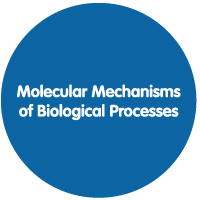
 | | Nanoprocesses for Life SciencesCoordinators
Ricardo O. Louro
Pedro Baptista Objectives
This unit aims to provide the students with an overview of the concepts, promises and caveats associated with the work on nanometer scale particles and structures in the context of biological sciences. Due to their size, nanometer sized particles interact with biological systems in new ways that are still being discovered. Upon successful
completion of the unit the students will be able to identify the major issues to be considered when dealing with nanometer scale particles in the realm of the biological sciences, and critically evaluate novel developments or proposals that involve such particles.
This will provide them with the intellectual tools to identify opportunities that may arise during their PhD work to use nanometer scale particles and associated technologies to advance their research program. Syllabus
The Curricular Unit will be organized around 5 major themes, which may be illustrated using the examples given for each of them
1.Hydration state of nano sized particles, their interfacial properties and implications for biofunctionalization;
Peptide based dendrimers; nucleotide origamis for drug delivery; coated magnetic nanoparticles for in vivo NMR imaging
2. Interactions between nano sized particles and biological systems
Nano-pores for DNA sequencing or real time pathogen detection; biomolecular recognition via ‘one to one’ interaction; investigation of cell processes using quantum dots;
3. Geometrically constrained diffusion. Implications for microfluidic artificial systems and lab-on-chip
Scale effects in hydrodynamics; molecular bases of signal transduction in biosensors
4. Nanotherapeutics
siRNA vectorization; controlled release of enzyme inhibitors
5. Nanotoxicology
Metallic nanoparticles and acute toxicity; Quantum-Dot toxicity; Size and architecture effects Evaluation
Students evaluated using presentations of papers selected by the students with individual presentations and discussion (evaluation including both the presentation and the critical and active participation in the discussions). Main Bibliography - Nanoparticles in Biology and Medicine : Methods and Protocols Series: Methods in Molecular Biology; Volume: 906; DOI: 10.1007/978-1-61779-953-2_6
- Nanobiotechnology: Concepts, Applications and Perspectives” C.M. Niemeyer, C.A. Mirkin (Eds.), 2004, Wiley-VCH, Weinhein, Germany
|
back to Molecular Mechanisms of Biological Processes Units

